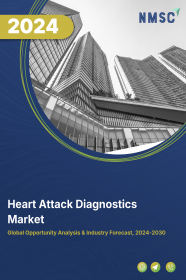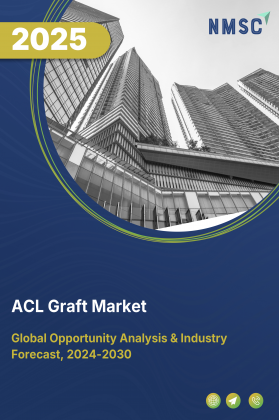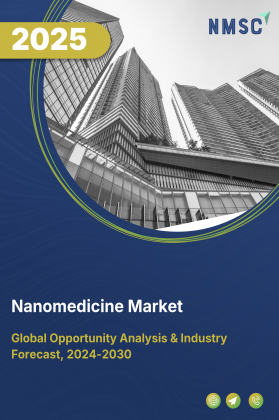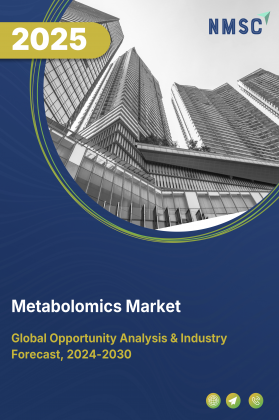
Heart Attack Diagnostics Market by Type (Minimally Invasive and Non-Invasive), by Test Type (Electrocardiogram (ECG/EKG), Blood Tests, X-ray, Angiogram, Computerized Cardiac Tomography, Echocardiogram, Coronary Catheterization (Angiogram), Exercise Stress Test, and Magnetic Resonance Imaging), and by End User (Hospitals & Clinics, Diagnostics Centres, Ambulatory Surgical Centres)- Global Opportunity Analysis and Industry Forecast 2024-2030
Market Definition
The global Heart Attack Diagnostics Market size was valued at USD 10.1 billion in 2023 and is predicted to reach USD 17.7 billion by 2030 with a CAGR of 8.4% from 2024-2030. Heart attack diagnostics includes the methods, tools, and procedures utilized to identify and evaluate instances of myocardial infarction, commonly known as heart attacks. These diagnostics play a crucial role in the timely and accurate detection of heart attacks, enabling healthcare professionals to administer appropriate interventions and treatments effectively.
Medical diagnostics involve a comprehensive approach, including patient medical history assessment, physical examination, and a range of tests such as electrocardiograms (ECGs), cardiac enzyme assays, chest X-rays, echocardiograms, and coronary angiography.
Heart attack diagnostics involve the development, production, and deployment of advanced medical technologies and procedures, including cutting-edge imaging technologies, biomarker assays, and innovative diagnostic modalities.
Ongoing advancements in diagnostic technologies, coupled with rigorous research and development efforts, drive continuous improvements in the accuracy, efficiency, and accessibility of heart attack diagnostics, ultimately contributing to better patient outcomes and reduced healthcare burdens associated with cardiovascular diseases.
Market Dynamics and Trends
The growth of the heart attack diagnostics market is propelled by the increasing prevalence of chronic diseases including obesity, diabetes, high blood pressure, and high cholesterol across the globe.
According to the latest report from the World Health Organization, non-communicable diseases are responsible for more than 41 million deaths annually, comprising 74% of global mortality. These statistics underscore the urgent need for effective diagnostic measures to detect and manage cardiovascular conditions such as heart attacks.
As the burden of chronic diseases continues to rise worldwide, there is a heightened demand for advanced diagnostic tools and technologies to facilitate early detection, intervention, and treatment, thereby driving the expansion of the heart attack diagnostics market.
Moreover, the heart attack diagnostics market is expanding due to advancements in diagnostic technology. New tools such as high-sensitivity troponin tests, point-of-care diagnostic tests, and advanced imaging techniques are making it easier to accurately detect and diagnose heart attacks.
These improvements allow healthcare providers to quickly identify myocardial infarctions and provide prompt treatment, leading to better outcomes for patients. With these advanced diagnostic options becoming more widely available, the market for heart attack diagnostics is anticipated to grow.
Furthermore, the rising number of heart attack cases worldwide is driving the market growth. According to the latest report from the World Health Organization, cardiovascular diseases are the leading cause of non-communicable disease deaths, affecting around 17.9 million people every year.
With heart attacks becoming more common globally, there is a growing demand for advanced diagnostic tools and technologies, which is contributing to the market's expansion. However, the high cost of heart attack diagnosis and the unavailability of adequate healthcare infrastructure in remote areas are expected to restrain the growth of the heart attack diagnostics market during the forecast period.
On the contrary, the incorporation of cardiac biomarkers and wearable sensors is anticipated to open up significant opportunities in the heart attack diagnostics market in the foreseeable future. These advancements are anticipated to precisely detect and diagnose heart attacks, leading to improved patient outcomes.
Additionally, wearable sensors enable remote monitoring of patients, facilitating timely interventions and reducing healthcare expenses. This combination of innovative technologies holds promise for enhancing the effectiveness of heart attack diagnostics and improving overall patient care.
Market Segmentation and Scope of Study
The heart attack diagnostics market is segmented based on type, test type end user, and region. Based on type, the market is segmented into minimally invasive and non-invasive. Based on test type, the market is divided into electrocardiogram (ECG/EKG), blood tests, x-rays, angiogram, computerized cardiac tomography echocardiogram, coronary catheterization (angiogram), exercise stress test, and magnetic resonance imaging (MRI).
Based on end users, the market is segmented into hospitals & clinics, diagnostics centers, and ambulatory surgical centers. Regional breakdown and analysis of each of the aforesaid segments includes regions comprising North America, Europe, Asia-Pacific, and RoW.
Geographical Analysis
The North American region holds the dominant share in the heart attack diagnostics market at present and is expected to further expand the market size during the forecasted period. This is attributed to the rising prevalence of chronic diseases such as diabetes, obesity, and hypertension that result in heart attacks and other heart-related problems in this region. According to the Centers for Disease Control and Prevention, 6 out of 10 adults in the US have a chronic disease including diabetes, cardiovascular disease, and cancer in 2022.
Moreover, the growing number of heart attack incidents is further driving the demand for early detection and treatment of heart disease in this region, further boosting the growth of the market. According to the report published by the Centers for Disease Control and Prevention, heart disease is the leading cause of death in the U.S., and about 697,000 people in the U.S. died from heart disease in 2020.
As awareness of heart health continues to rise and the importance of early detection becomes more apparent, the demand for advanced diagnostic solutions is expected to escalate, driving further growth in the market.
On the other hand, Asia-Pacific shows substantial growth the in the heart attack diagnostic market due to the increasing number of deaths from cardiovascular diseases (CVD) in countries such as India, China, and Thailand is propelling the market's expansion. According to recent data from the National Crime Records Bureau, India has experienced a significant surge in fatalities attributed to heart attacks.
In 2022 alone, over 32,457 individuals lost their lives due to heart attacks in the country. With such a rising burden of heart-related conditions, the demand for advanced diagnostics solutions is expected to surge, fostering the heart attack diagnostic market growth, further.
Additionally, the presence of key market players such as Hitachi Healthcare and Koninklijke Phillips N.V. are further boosting the growth of the market. These companies play a crucial role in driving advancements, innovation, and market expansion within the heart attack diagnostics sector in Asia-Pacific.
For instance, in January 2024, Philips introduced the 'Mini transesophageal echocardiography' (TEE) ultrasound transducer, which received FDA clearance, aiming to enhance cardiac care for a wider range of patients. The TEE technology offers cardiologists 3D TEE images of the heart and its internal structures, aiding in timely interventions, improving minimally invasive heart surgeries and procedures, and revolutionizing the treatment of heart valve issues and congenital heart defects. Philips has launched the 'Mini transesophageal echocardiography' (TEE) ultrasound transducer, which has been cleared by the FDA.
This new technology aims to improve cardiac care for a wider range of patients. The TEE device provides cardiologists with detailed 3D images of the heart and its internal structures, helping them make timely interventions and enhancing minimally invasive heart surgeries and procedures. It represents a significant step forward in the treatment of heart valve problems and congenital heart defects.
Competitive Landscape
Various market players operating in the heart attack diagnostics industry include Siemens Healthcare AG, Abbott Laboratories Inc., GE Healthcare, Beckman Coulter Inc., Pfizer Inc., Caption Health, Koninklijke Phillips N.V., Hitachi Healthcare, Midmark Corporation, Schiller AG, Bio-Rad Laboratories Inc., Welch Allyn Inc, Cardio Diagnostics Holdings Inc, Life Sign LLC, F. Hoffmann-La Roche Ltd, and others.
The key strategies adopted by these market players are product launches and collaborations to improve their market position and remain dominant in the market. For instance, in February 2023, Cardio Diagnostics Holdings Inc. launched a blood test for the early detection of coronary heart disease that measures the levels of certain proteins in the blood that are associated with coronary heart disease. Through this launch, the company aims to enable earlier detection and intervention of heart disease to improve patient outcomes.
Moreover, in November 2021, Caption Health entered into a partnership with Ultromics to bring advanced heart disease detection and management tools to healthcare providers. This collaboration aimed to improve the accuracy and speed of heart disease diagnosis using AI-powered ultrasound technology.
Furthermore, in March 2021, Royal Philips Health Technology launched of AI-enabled precise suite solution for the company’s Incisive Computed Tomography (CT) platform. The AI-based CT uses a powerful X-ray for image reconstruction, automated patient positioning, motion-free cardiac image capture, and real-time interventional guidance to drive precision in dose, speed, and image quality of the heart and its blood vessels that supply blood to the heart to diagnose a variety of heart conditions.
Key Benefits
-
The report provides quantitative analysis and estimations of the heart attack diagnostics market from 2024 to 2030, which assists in identifying the prevailing market opportunities.
-
The study comprises a deep-dive analysis of the current and future heart attack diagnostics market trends to depict prevalent investment pockets in the industry.
-
Information related to key drivers, restraints, and opportunities and their impact on the heart attack diagnostics market is provided in the report.
-
A competitive analysis of the key players, along with their market share is provided in the report.
-
SWOT analysis and Porter's Five Forces model are elaborated in the study.
-
Value chain analysis in the market study provides a clear picture of the roles of stakeholders.
Heart Attack Diagnostics Market Key Segments
By Type
-
Minimally Invasive
-
Non-Invasive
By Test Type
-
Electrocardiogram (ECG/EKG)
-
Blood Tests
-
X-ray
-
Angiogram
-
Computerized Cardiac Tomography
-
Echocardiogram
-
Coronary Catheterization (Angiogram)
-
Exercise Stress Test
-
Magnetic Resonance Imaging (MRI)
By End User
-
Hospitals & Clinics
-
Diagnostics Centres
-
Ambulatory Surgical Centres
By Region
-
North America
-
The U.S.
-
Canada
-
Mexico
-
-
Europe
-
The UK
-
Germany
-
France
-
Italy
-
Spain
-
Denmark
-
Netherlands
-
Finland
-
Sweden
-
Norway
-
Russia
-
Rest of Europe
-
-
Asia Pacific
-
China
-
Japan
-
India
-
South Korea
-
Australia
-
Indonesia
-
Singapore
-
Taiwan
-
Thailand
-
Rest of Asia Pacific
-
-
RoW
-
Latin America
-
Middle East
-
Africa
-
Key players
-
Siemens Healthcare AG
-
Abbott Laboratories Inc.
-
GE Healthcare
-
Beckman Coulter Inc.
-
Pfizer Inc.
-
Caption Health
-
Koninklijke Phillips N.V
-
Hitachi Healthcare
-
Midmark Corporation
-
Schiller AG
-
Bio-Rad Laboratories Inc.
-
Welch Allyn Inc.
-
Cardio Diagnostics Holdings Inc.
-
Life Sign LLC
-
F. Hoffmann-La Roche Ltd.
REPORT SCOPE AND SEGMENTATION:
|
Parameters |
Details |
|
Market Size in 2023 |
USD 10.1 Billion |
|
Revenue Forecast in 2030 |
USD 17.7 Billion |
|
Growth Rate |
CAGR of 8.4% from 2024 to 2030 |
|
Analysis Period |
2023–2030 |
|
Base Year Considered |
2023 |
|
Forecast Period |
2024–2030 |
|
Market Size Estimation |
Billion (USD) |
|
Growth Factors |
|
|
Countries Covered |
28 |
|
Companies Profiled |
15 |
|
Market Share |
Available for 10 companies |
|
Customization Scope |
Free customization (equivalent up to 80 working hours of analysts) after purchase. Addition or alteration to country, regional, and segment scope. |
|
Pricing and Purchase Options |
Avail customized purchase options to meet your exact research needs. |




















 Speak to Our Analyst
Speak to Our Analyst

























